Home office layout ideas – 17 ways to help make your WFH days as comfortable and productive as possible
Experts share how to best lay out your home office and make it work for you, no matter how much space you have at your disposal
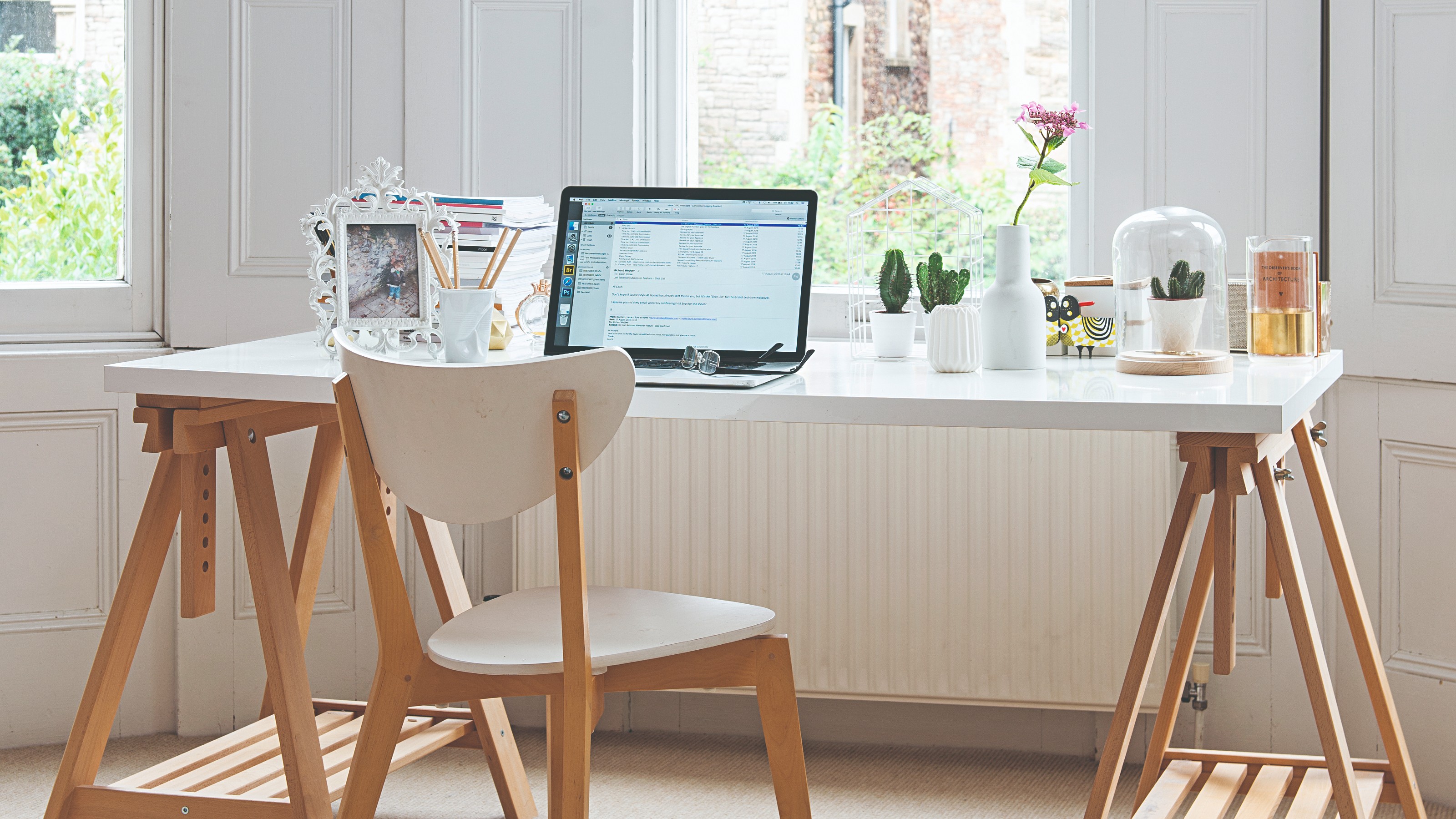

The environment in which you work has a direct effect on your productivity – as well as your mood and comfort. So when the time comes to design your home office or WFH nook, close attention should be paid to everything from the right, inspiring and mood-boosting decor to the right home office layout ideas, all of which will have an influence on your work performance.
When considering and mood-boarding your home office ideas, it’s important to first and foremost consider the location of where your WFH station will be set up within your home, as well as where all the key pieces will go so that you can sit and move about comfortably and everything you need during your work is within reach. Only then should you start thinking about home office desk ideas, the perfect chair etc. to fit within that scheme.
Home office layout ideas
‘The ultimate considerations for a home office are comfort, organisation, and efficiency – your home office layout should always work towards these three things,’ says Hannah Prescott, interior designer at Diamond Interiors.
And these expert-approved tips will help you get there, whether you’re looking for small home office ideas or are working with adequate office space
1. Position the desk in line with feng shui

Your office desk is the most important piece of furniture in any home office, the centre and anchor of the space that everything revolves around. But there are debates and differing opinions as to where the desk should be positioned. But if you want to improve feng shui in your home and your office, then feng shui experts recommend positioning your desk to face the door.
‘The rules of feng shui state that you should sit with your desk facing the door so you can always see who is coming in,’ said leading office furniture specialists at Furniture At Work.
But even if you don’t believe or don’t care about feng shui, positioning your desk this way can be beneficial, according to Ashleigh Hanwell, senior designer at Second Nature. ‘Positioning a desk so that you can see the door can make the space feel more open and aesthetically pleasing,’ she says.
Get the Ideal Home Newsletter
Sign up to our newsletter for style and decor inspiration, house makeovers, project advice and more.
2. Look out the window while working

Another popular desk positioning is so that you face and look out of the window which can have mood-boosting effects and can aid against eye strain from looking at the computer screen for too long. Having the window to the side of the desk is also an excellent alternative.
‘Position the desk to face a window for natural light and a view, which can help stimulate creativity and reduce eye strain,’ says Brian Curran, interior designer and founder at Drafting Services.
Experts from Furniture at Work add, ‘Placing your desk perpendicular to your window will allow you to both see the room and benefit from the natural daylight while you work. Having your desk located near your window is also beneficial as it allows you to give your eyes a break when needed from screens. However, you should also consider installing blinds if you haven’t already, as these will help reduce glare on especially brighter days.’
3. Create the best backdrop for your video calls

If you’re regularly working from home, it’s likely you will have to attend some video calls. So be prepared for those occasions by carefully considering your backdrop – what those on the call with you will see behind you. It’s no coincidence that the popularity of WFH has also given rise to the trend of bookshelf wealth.
‘Studies have found that, when making a first impression in a video meeting, your background choice is more important than your clothing, so it’s vital to strike the right balance when trying to appear professional. Houseplants and bookcases can allow you to present as more trustworthy, whereas those who use novelty or green screen backgrounds can be seen as less competent,’ said experts from Furniture at Work.
Hannah at Diamond Interiors agrees, ‘A neutral wall with minimal decor, such as a piece of artwork or a bookshelf, works well. If possible, consider adding a plant for a touch of warmth. The aim is to create a backdrop that is visually appealing but not overwhelming.’
4. Make space for storage solutions

No WFH set-up is complete without some home office storage ideas. Just like any other space, a home office too needs plenty of storage so invest in some floating shelves, bookcases or a desk with built-in drawers or storage shelves to take care of that.
‘You will also want to ensure you have enough space for storage solutions, such as filing cabinets, shelves and drawers. Floating shelves is a great option to create the illusion of more space,’ Ashleigh at Second Nature says.
5. Make a living room dual-use
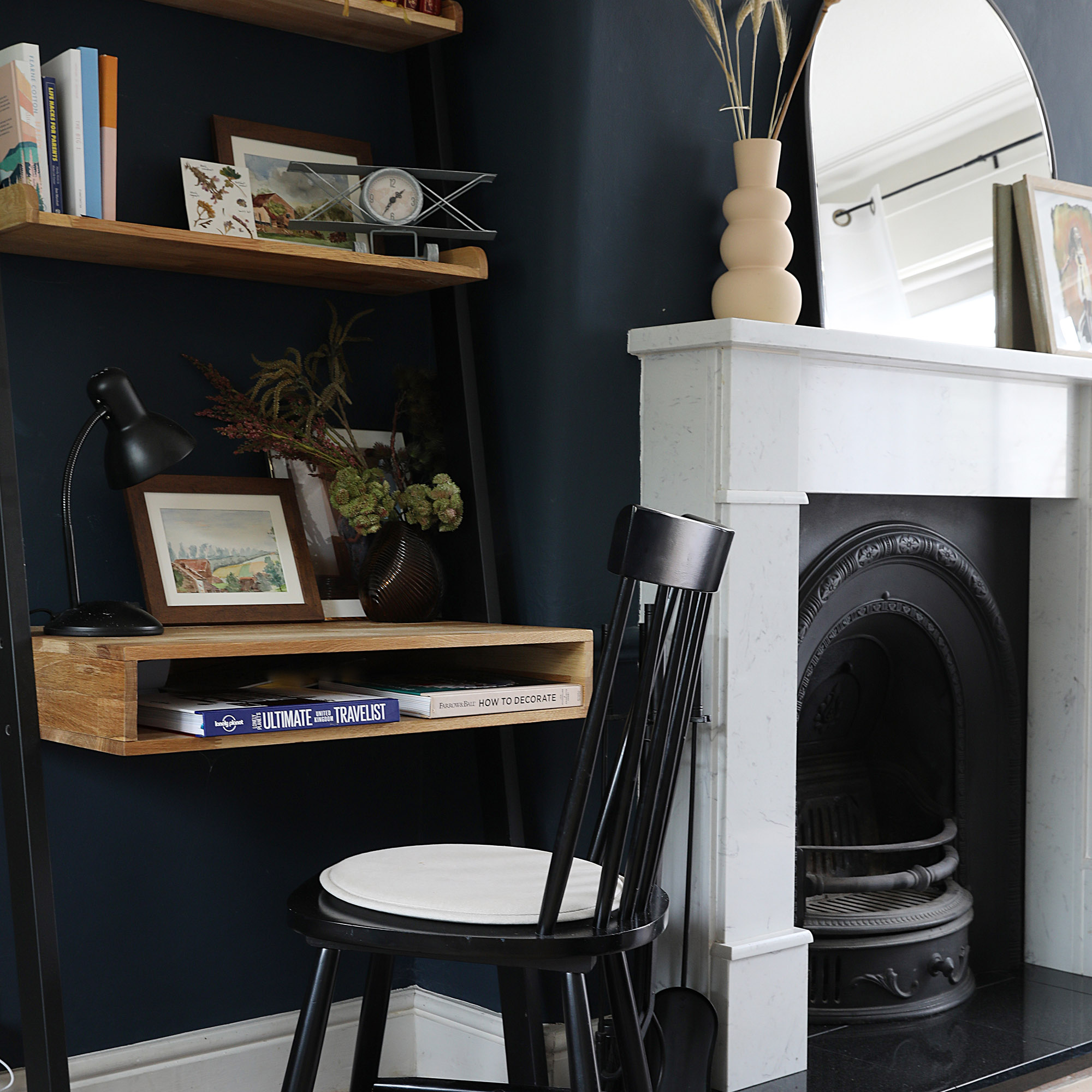
We won't all have a separate home office that can be designed entirely around your work needs - sometimes it's all about finding a way to incorporate a practical spot into your existing living space.
'home offices are often areas within existing rooms, which is not ideal - but you can still zone the area using paint and accessories,' advises Sophie Smith, founder at Zhoosh Paints. In this case, open shelving that matches the wood tone of the wall-hung desk creates a work zone within this open-plan living room, so that it feels separate from where you relax and socialise.
'They help keep the desk area tidy and also create a purpose for that section of the space without clashing with your existing colour scheme,' adds Sophie.
6. Opt for an under-stairs workspace
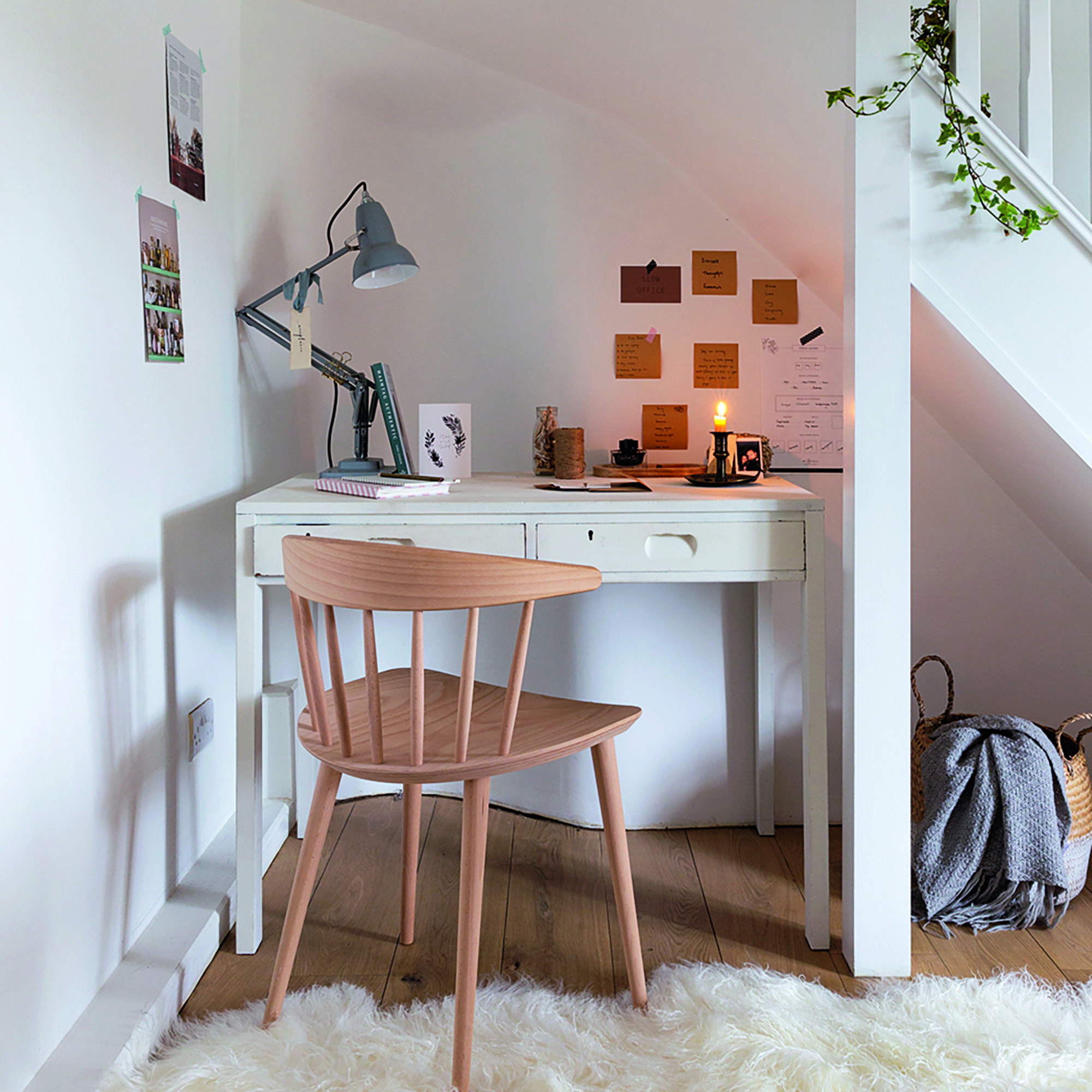
Making use of awkward spaces is key to ensuring your home works as efficiently as possible. The gap under the stairs is difficult to utilise for anything other than storage, but it also makes the perfect slot for a desk.
If a small home office doesn't phase you, and all you need is a spot to work on a laptop, then placing a desk here will provide a place to perch that is tucked out of the way. Just ensure it's illuminated with the best home office lighting ideas so that you can keep focus at any time of day.
7. Make use of a landing
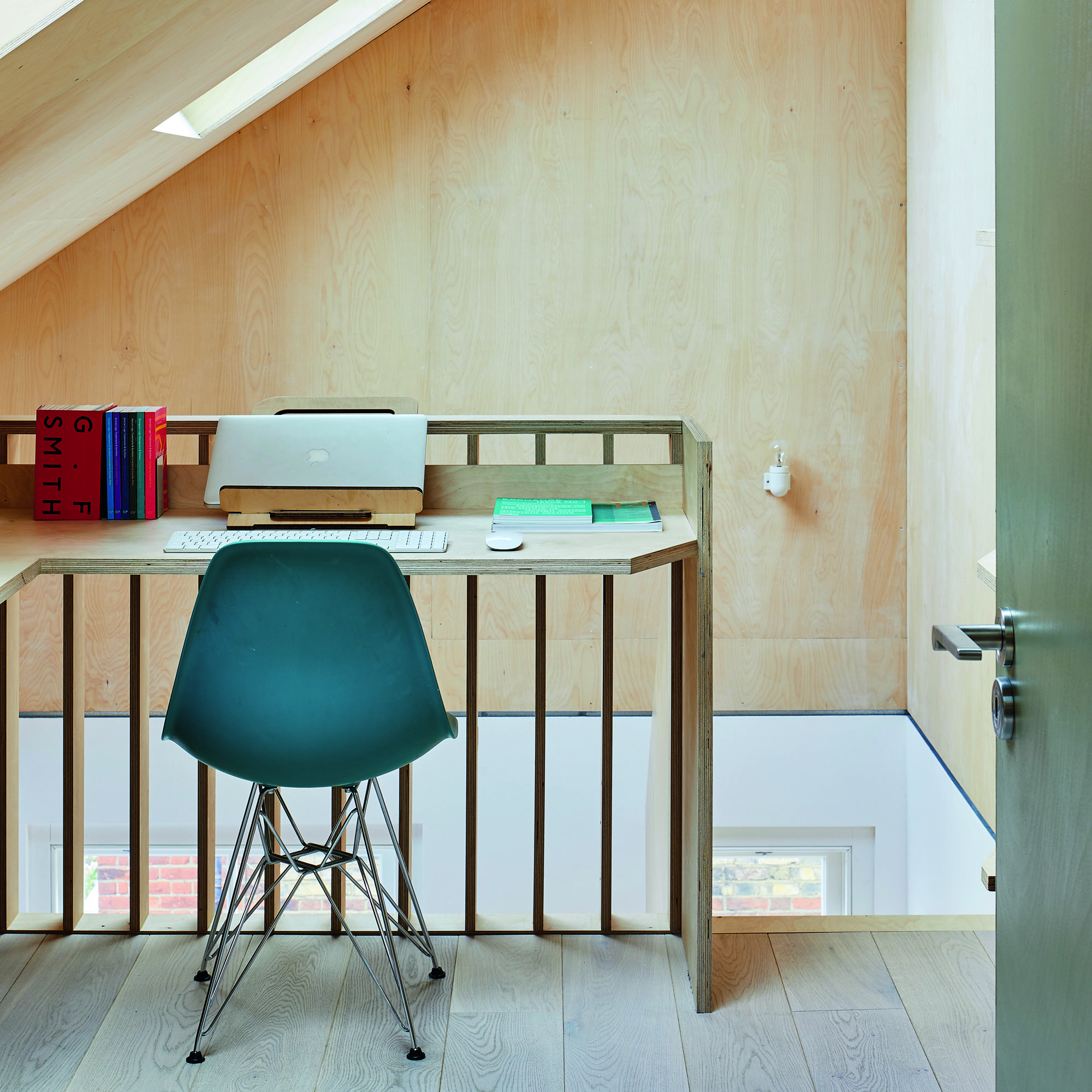
It's easy to believe that a home office has to be tucked away in a dedicated room, but actually finding a less common spot to work could be the source of some much-needed inspiration.
A landing is a perfect placement for this as it transforms an otherwise dead space into a useful focus zone. While an enclosed area away from traffic might be beneficial for some work, being in a busy area can aid creativity.
If you don't want to overcrowd a landing, opt for a desk that blends in with the staircase, whether that be a similar spindle style or shade of wood. This way, it's making excellent use of the space without causing any visual clutter.
8. Maximise natural light
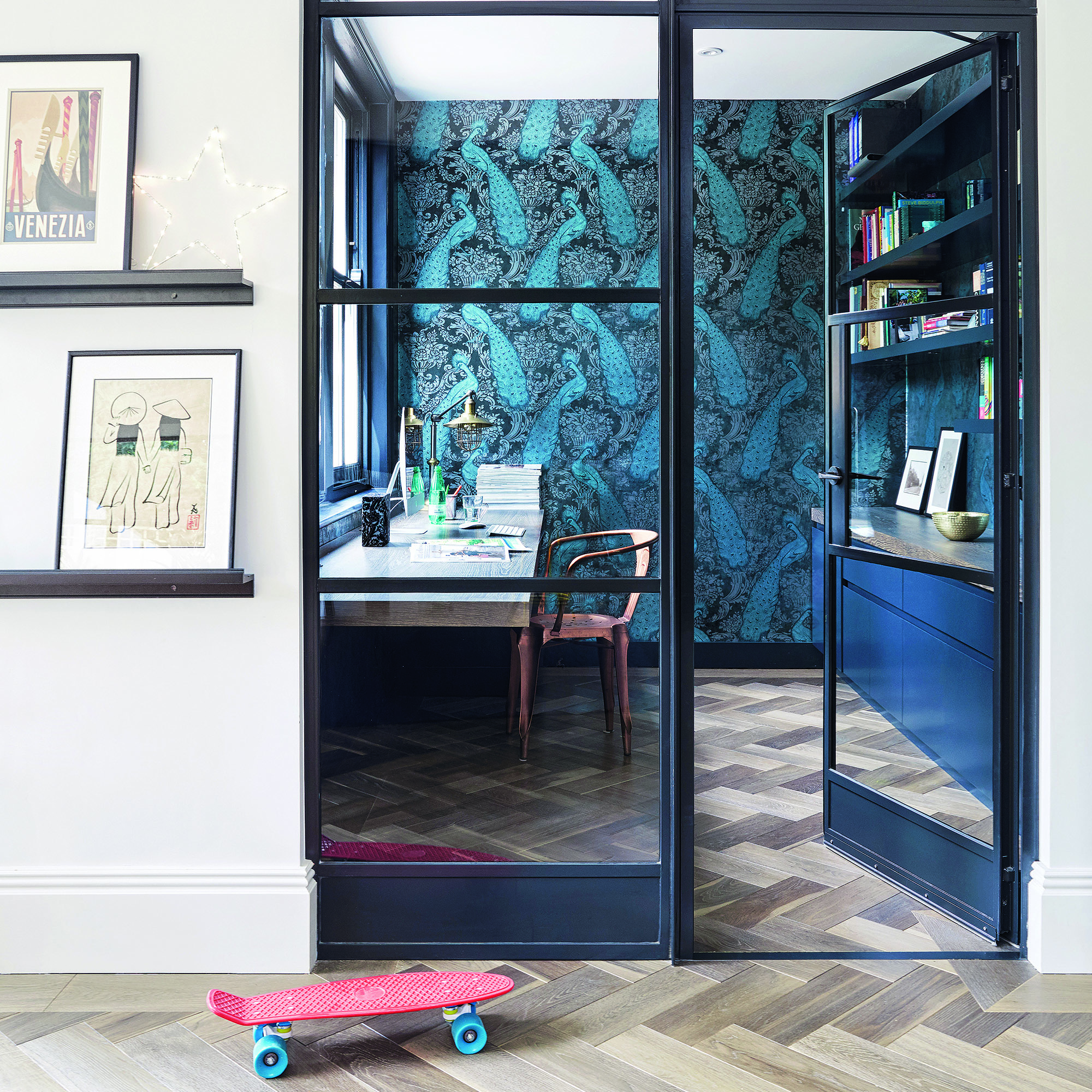
If you have a separate home office but you want it to feel connected to the rest of your home, then glass doors will provide ample light while still keeping noise out.
'Your home office should feel like part of your home since it is an extension of your personal style, but you also want it to be a place with minimal distractions. Luckily, there are multiple easy ways to tune out that pile of dishes or blaring TV and get you the privacy that you and your workflow need,' says Emma Cottrell from BoConcept.
'French doors can block out noise while maintaining an airy aesthetic. Especially ideal for small offices that want privacy without a claustrophobic vibe.'
9. Work at an angle
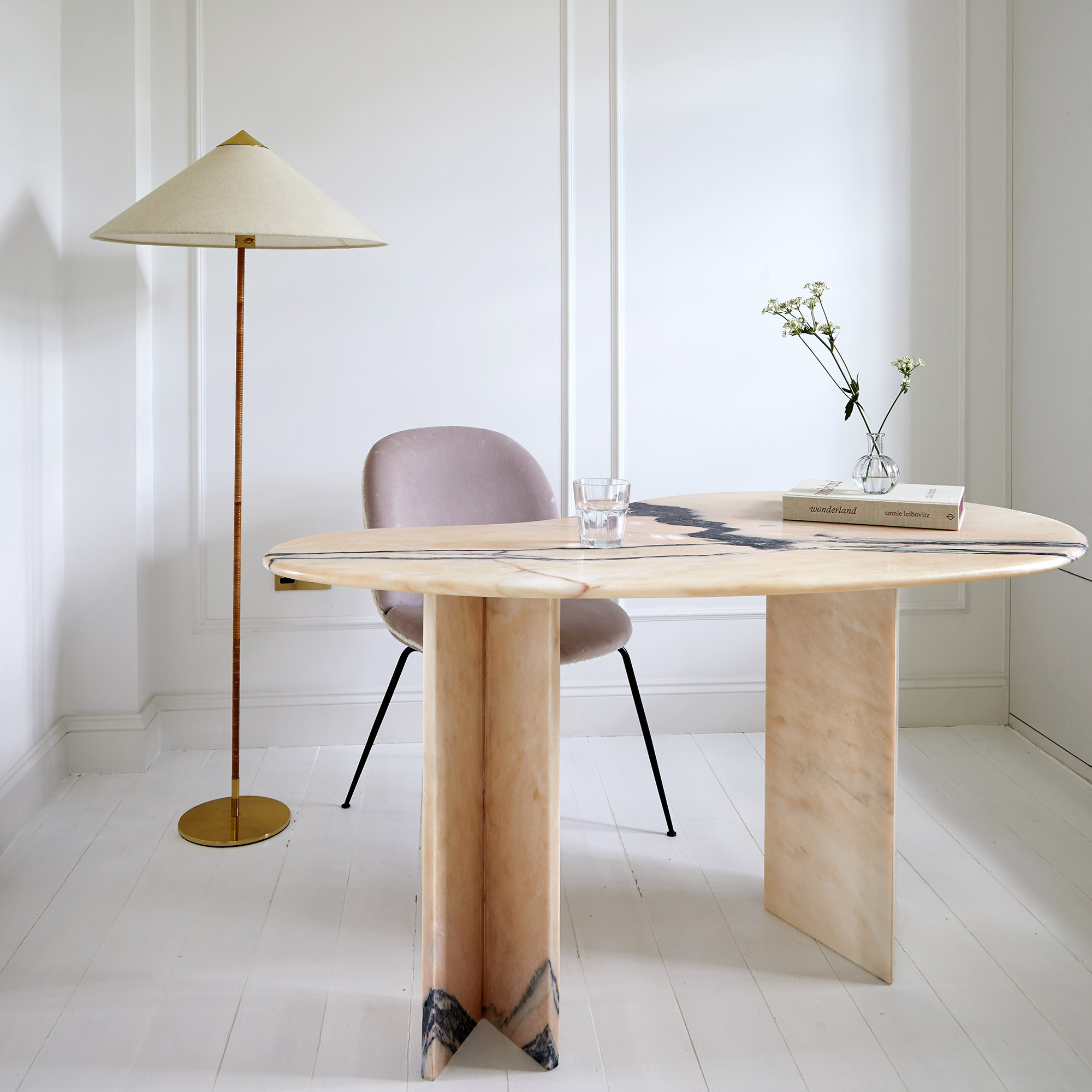
When planning a home office layout, it's easy to jump straight to positioning a desk up against a wall. While this means you have more floor space to work with, facing the wall isn't always the most inspiring view.
Instead, consider placing a desk more centrally in the room and at an angle. This layout will look more styled as opposed to placing practicality first, and will help to prompt creativity by working in a more interesting position.
10. Plan out the lighting
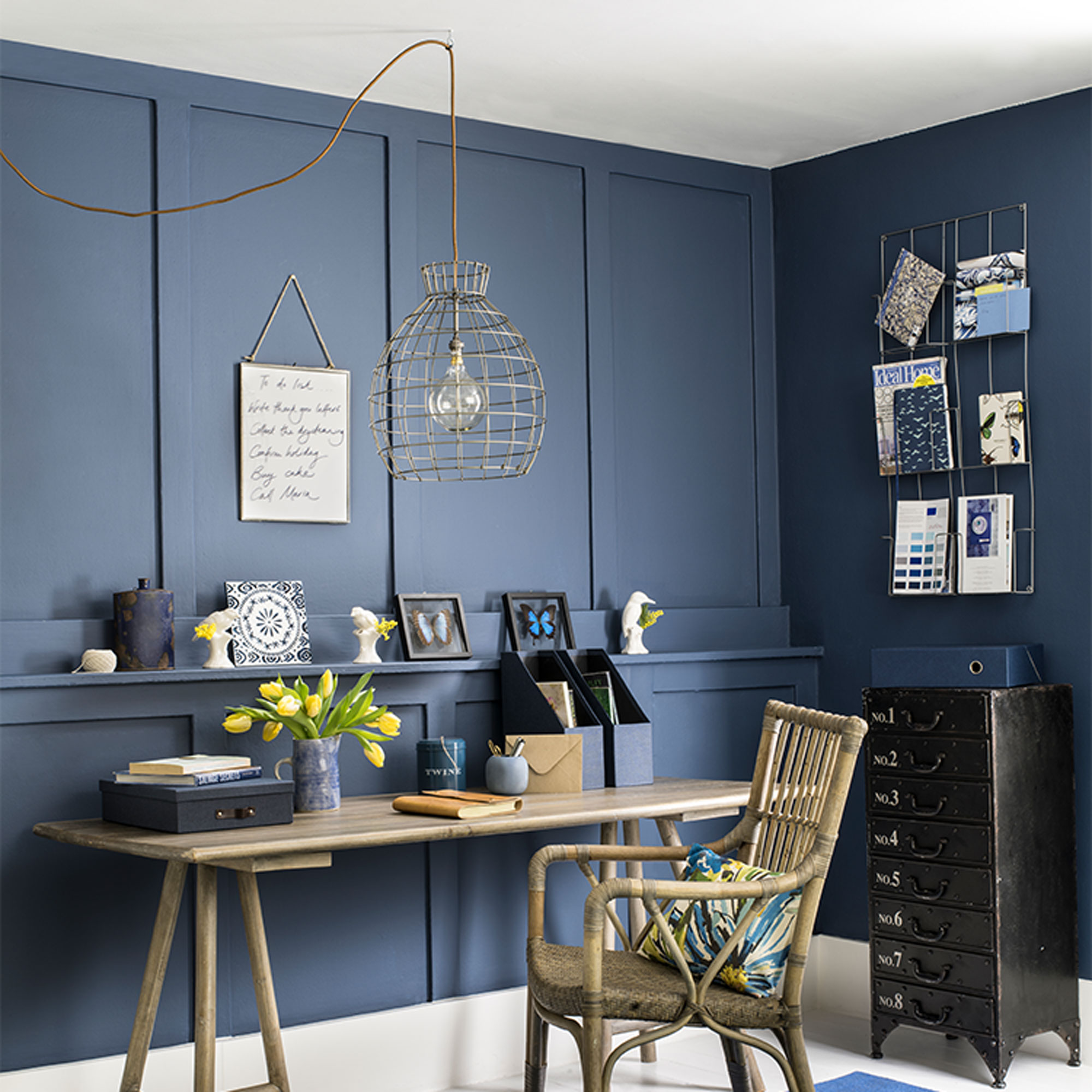
No matter how much natural light your office space receives, additional home office lighting ideas will need to be factored in for evenings and autumn and winter months when the light is gloomier.
Consider where your light source is coming from when setting up your work space. A light set behind you is likely to cause glare on your screen and might mean that you are working in shadow, so consider adjusting the positioning of overhead lighting to counteract this. Or bring in an adjustable desk lamp to boost light levels. Position so that light comes from the left side if you are right-handed, and vice versa if you are left handed.
If you're considering purchasing a couple of different lights to suit all your needs, then it's well worth checking if there are any relevant active home decor discount codes on offer.
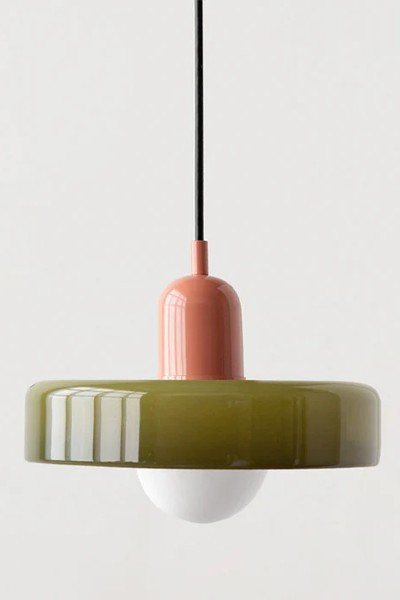
As already mentioned, overhead lighting is a better option than having lighting behind you in a home office. And a design like this retro-style glass pendant can also inject some colour into the space. It's available in several shades to match your particular home office colour scheme.

If you're looking for a great desk lamp, the John Lewis Tony desk lamp is the perfect dupe for one of the most iconic of desk lamps - the Anglepoise Type 75. Available in a wide range of colours, we're particularly loving one of the most recent shades called auburn, as pictured.
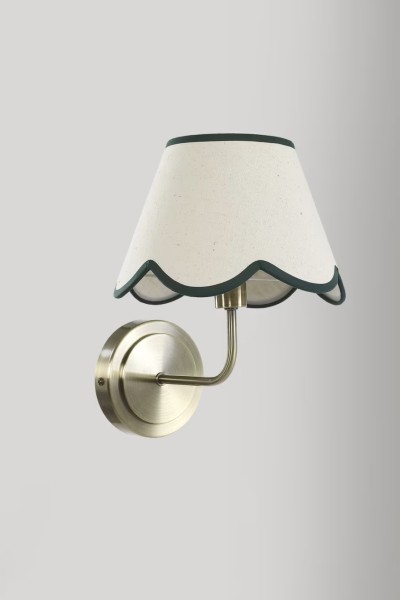
If you don't have a lot of space in your office or on your desk at your disposal then opting for a wall light just above the desk in place of a desk lamp is the perfect space-solving solution. The M&S Kirsten table lamp has been enjoying much popularity in the past couple of years - so much so that the brand has released a whole lighting range with the signature scalloped lampshades, including this wall light.
11. Utilise a divider to create a private zone
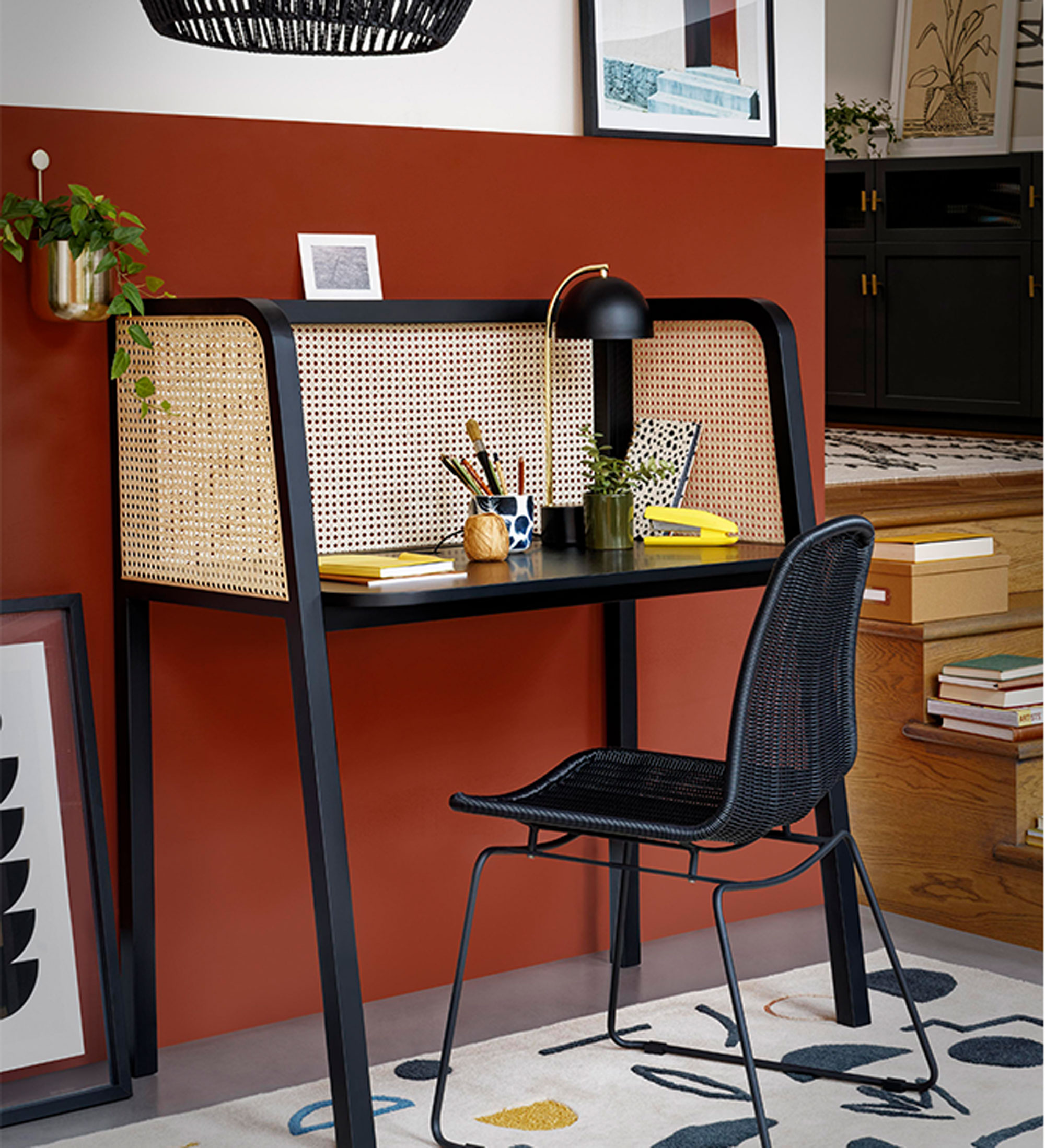
If space is super tight and working from home in a shared space is the only option, then try to tuck the desk away in as quiet a spot as you can. A temporary screen, panel or shelving unit that acts as a room divider can all help to provide extra privacy while working. Tall, floor-standing plants and greenery are another option that can help to screen-off an area and help deaden outside noise a little.
‘Opt for a room divider or desk with built-in walls to carve out a designated area for work. Isolating the workspace in this way evokes an element of seclusion which encourages focus and concentration,’ says Rachel Fell, furniture buying manager at Habitat. ‘These clear physical boundaries also help mentally separate office and living areas, meaning it’s easier to leave work behind at the end of the day.’
12. Keep inspiration close to hand
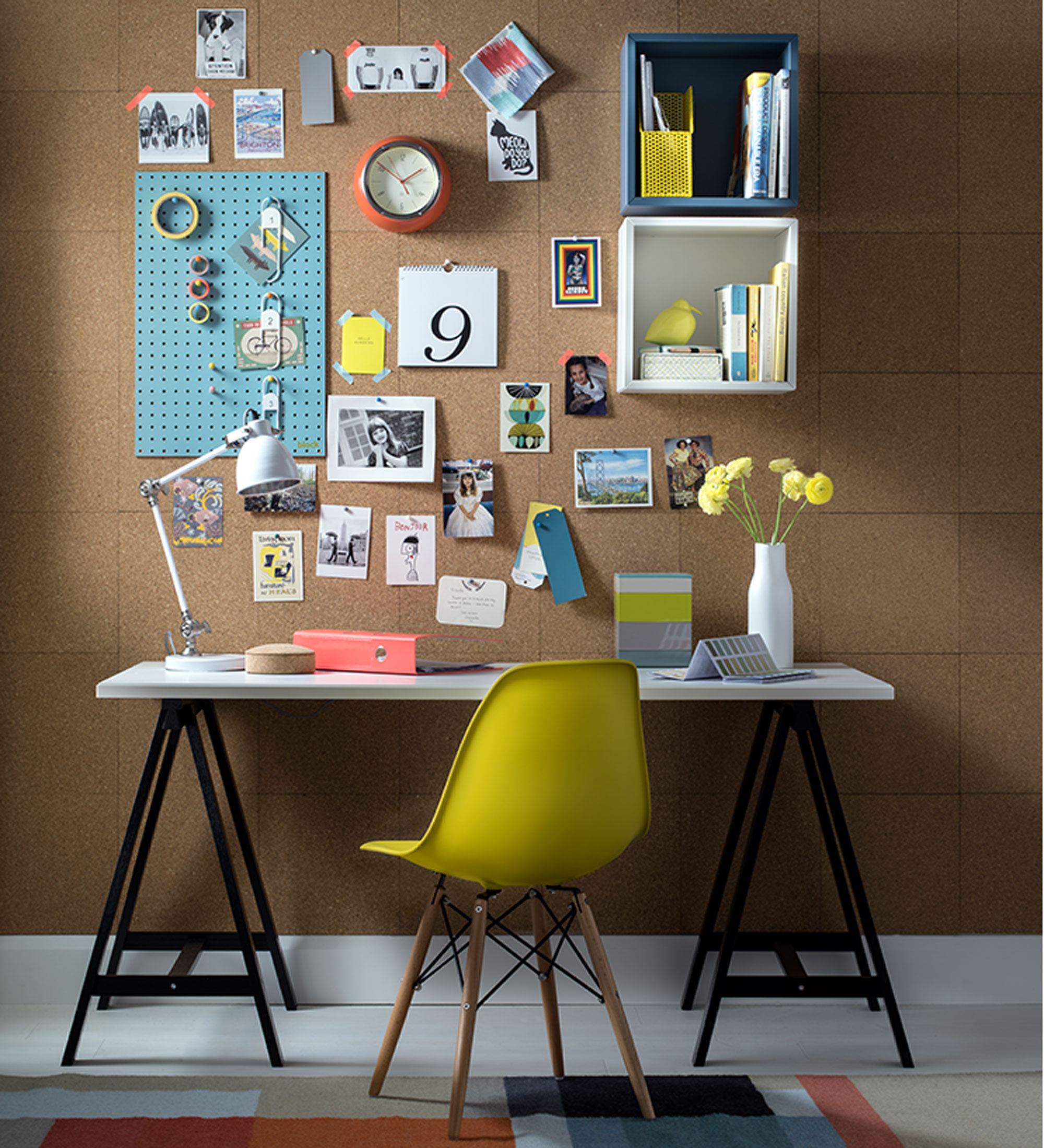
While an outwardly-facing desk is often recommended, it will require more space, which isn’t always possible if you’re squeezing a desk into a shared living area. Practical elements, such as the location of electrical sockets, need to be considered too. If you have a computer and equipment that needs to be plugged in, while you can look into how to hide wires, trailing wires could be a problem for any centrally-positioned desk.
If the most practical home office layout means that your desk needs to be positioned facing a wall, then use it as an opportunity to get creative with your wall space. Treat the whole area as a supersized pinboard, covering the wall with cork tiles, so you can pin up reference materials, swatches and favourite pictures that will bring inspiration when you’re working away.
13. Zone out a work corner
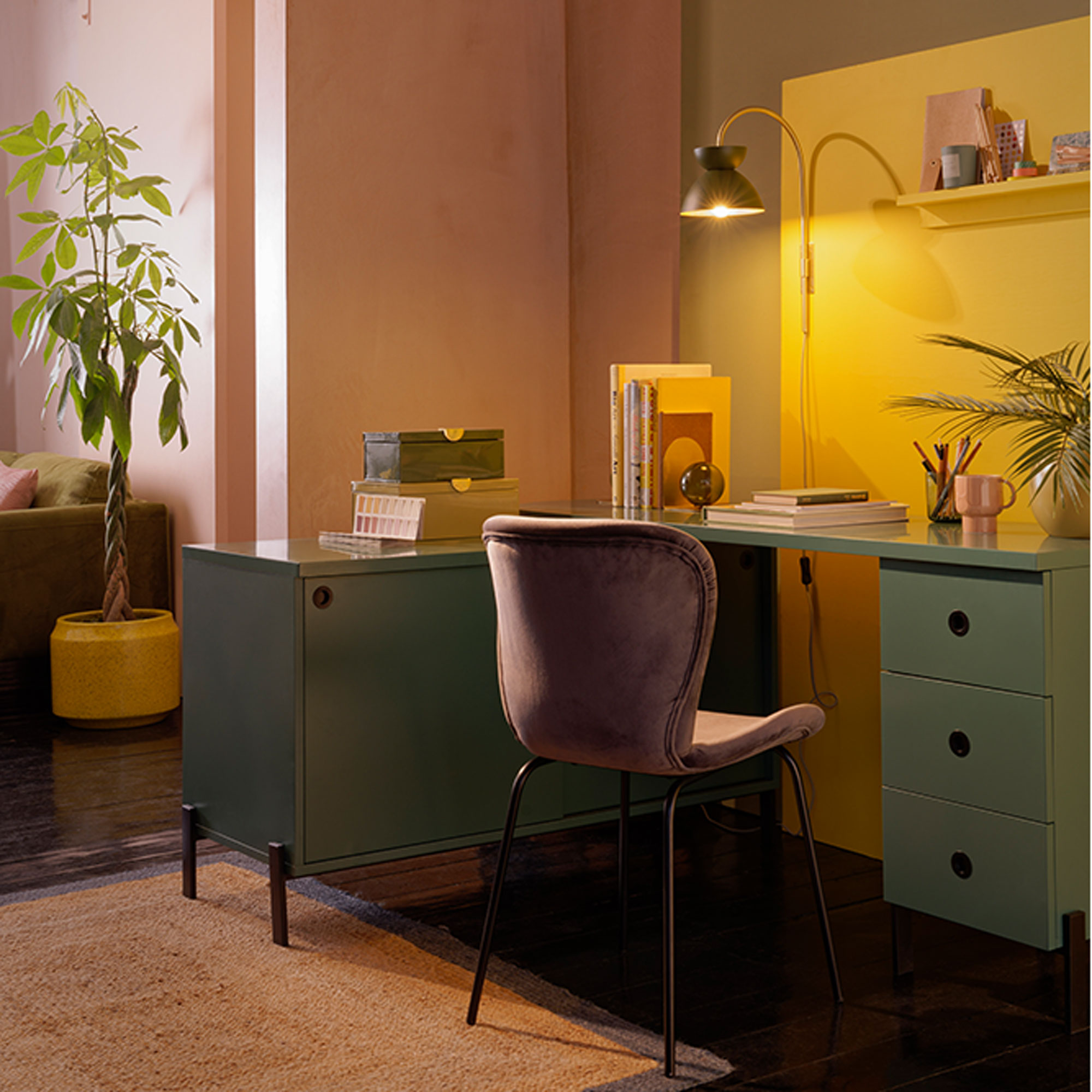
Making use of a corner is a clever way of gaining extra surface space without encroaching on too-much floor space. Triangular-shaped desks are a smart compact home office desk ideas that will slot neatly into a corner if space is super-tight.
Alternatively, an L-shaped desk set-up offers extra desktop space, with two surfaces set at right angles to each other. L-shaped configurations work well in open-plan living spaces and are a useful way of defining a separate work-space zone.
‘Home working shows no sign of abating, so as a design studio we continue to put emphasis on products that support flexible living,’ says Ben Stanton, designer at Habitat. ‘This desk unit (shown above) is designed and built to increase storage solutions whilst being adaptable to different home office needs. The unique swivel mechanism allows for a multitude of positions: the L-shaped desk can zone a space or make the most of unused corners, and it can also extend flat against a wall.’
14. Go for a multi-tasking work table
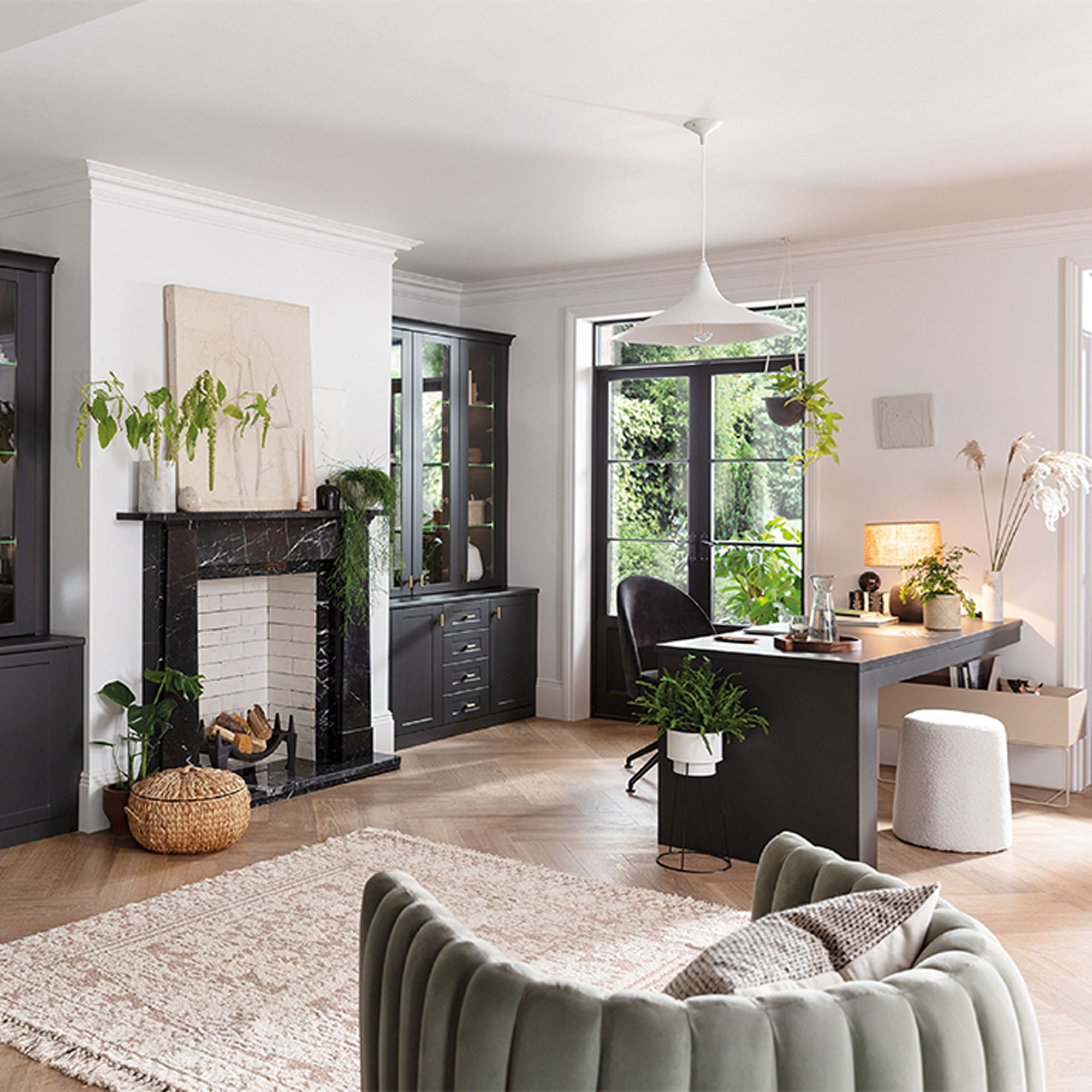
Whether you work from home, want a desk to do paperwork or a space where the kids can spread out and do their homework, a work table can be a useful addition in a family room or open-plan living space.
A peninsula-style desk or table is a space-saving option if you don’t have the space for a central work table. With one end positioned against a wall, it will take up less floor space, while still allowing traffic to go round it at one end.
15. Double up desks in a shared space

If more than one family member is working from home at the same time, then working out an arrangement that accommodates both is needed if 'hot desking' is out of the equation.
Consider butting two desks up against each other, his-and-hers style, and setting them centrally in the middle of a room. Or position them with one end against the wall in a peninsula-style set-up. Both arrangements will require face-to-face working, but as long as that won’t be a distraction, it can be a good use of space.
16. Switch to side-by-side working
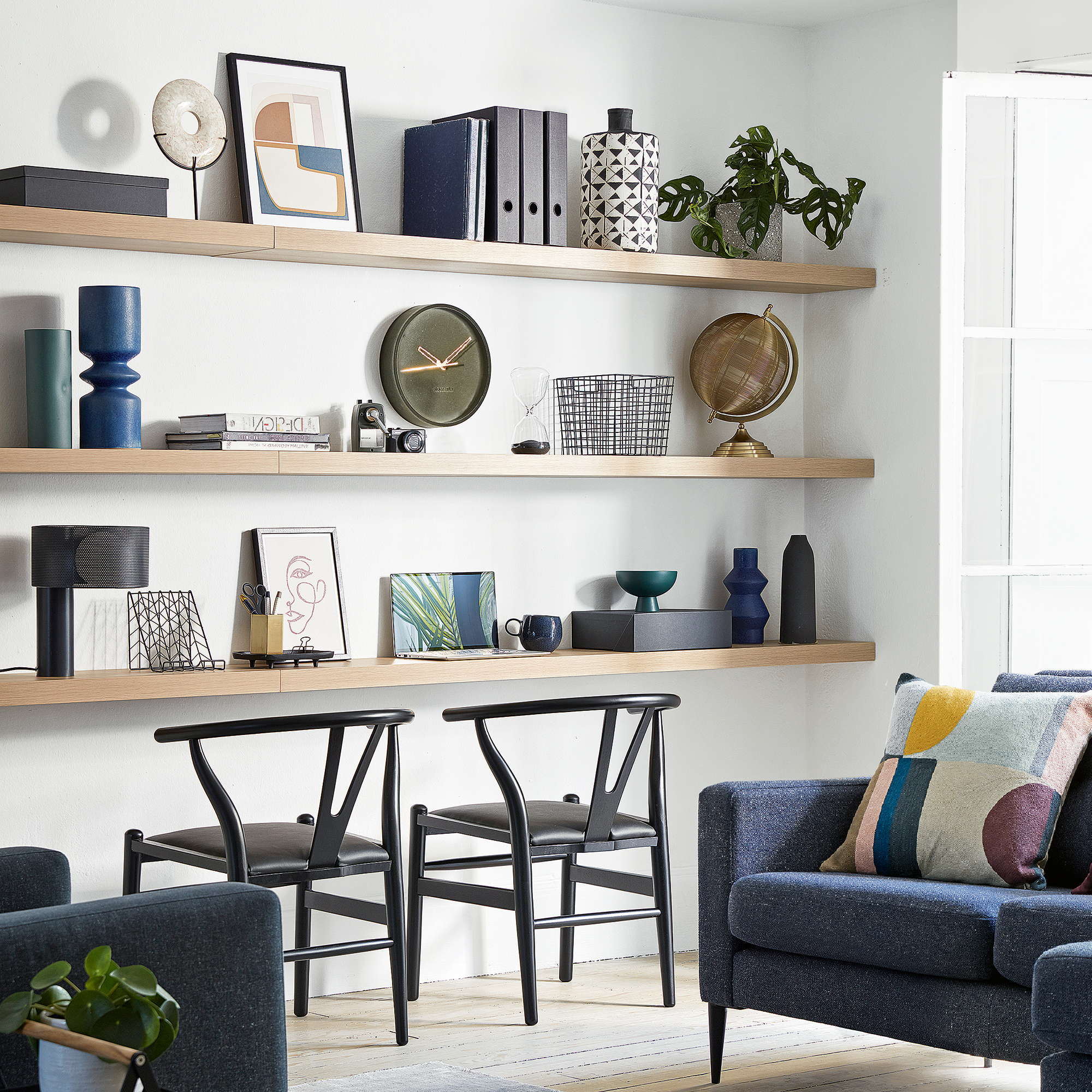
If face-to-face desks aren’t an option, or your office space is long and narrow, then consider a side-by-side arrangement instead. Positioning two desks next to each other will mean that each person has their own individual space, but can swivel round and interact with each other when necessary.
Use the wall space above the two desks for extra storage so that the floor space doesn’t feel too crowded. Open shelves and cubbies are handy home office storage ideas for files, books and paperwork and are easier to access than cabinets.
17. Set up a home hub
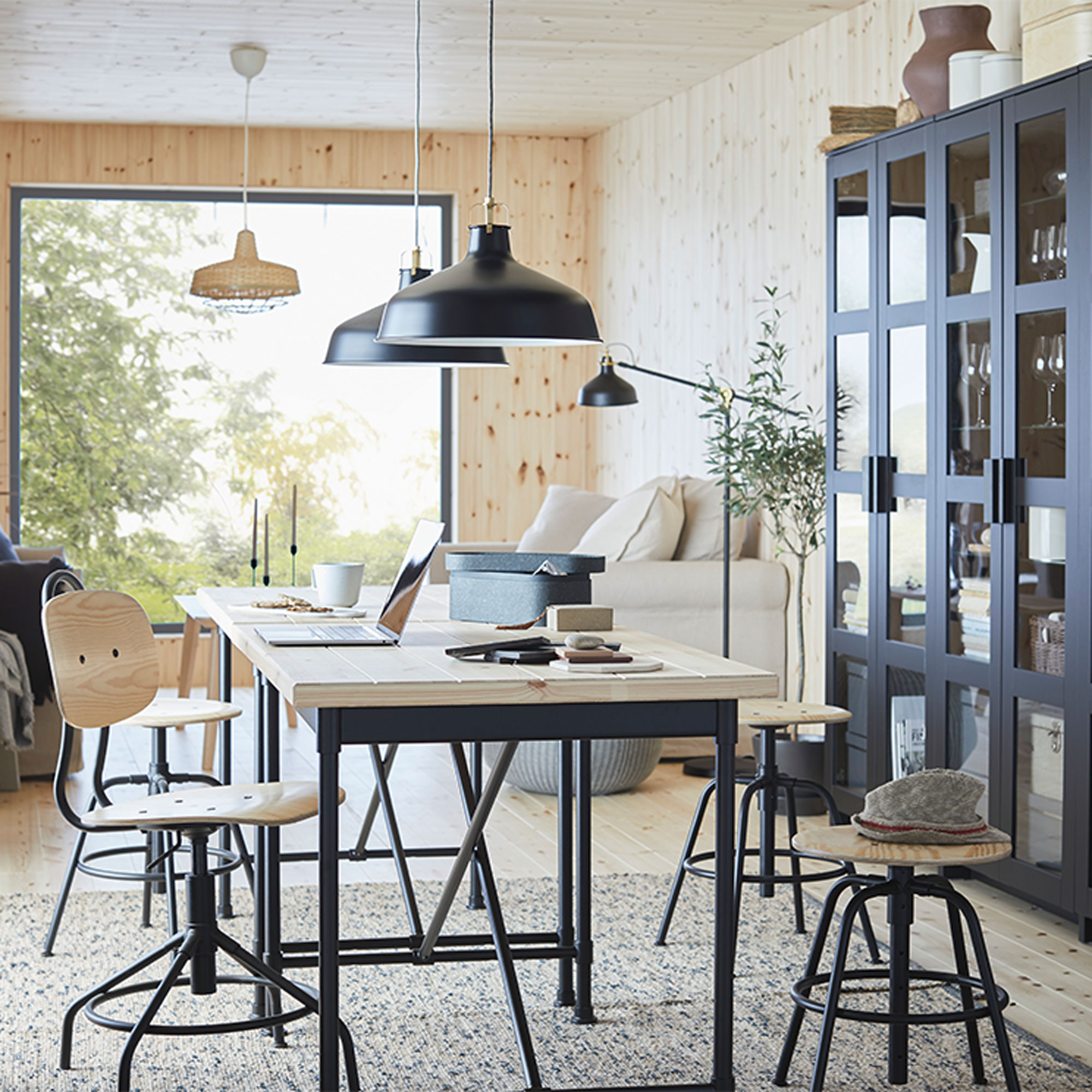
Integrate a central hub in your open-plan living room ideas or family room with a high work table and stools set-up that will give plenty of table space for all the family to work at. Choose materials that blend in with and complement the room’s decor and use a large rug as an anchor point to help define the work area more prominently.
FAQs
How do you set up a home office layout?
When setting up a home office you need to first consider the size of the room you're planning to use as a home office. If you are working with a dedicated room you'll have a lot more freedom with the layout, and therefore alot more decisions to make than if you're converting a small closet into a dedicated work space.
Your starting point is to work out the best place for your desk, that could be under a window if you have one or close to the sockets. Once you have decided on the location, before you buy any furniture work out how much space you have for the desk and office chair to fit in comfortably. You should be able to pull the chair in and out easily, and have enough space for a laptop as a bare minimum.
Once that central decision has been made, you can start building your home office layout around it and start including lighting, followed by storage. Lighting is an incredibly important part, aim to include task lighting over the desk and ambient lighting for a productive work zone.
When planning out storage, consider what you actually need to store in your home office and the space you have available. Whatever, you plan in, whether it be shelves or drawers, make sure you can easily access everything on the shelf without having to move anything out of the way.
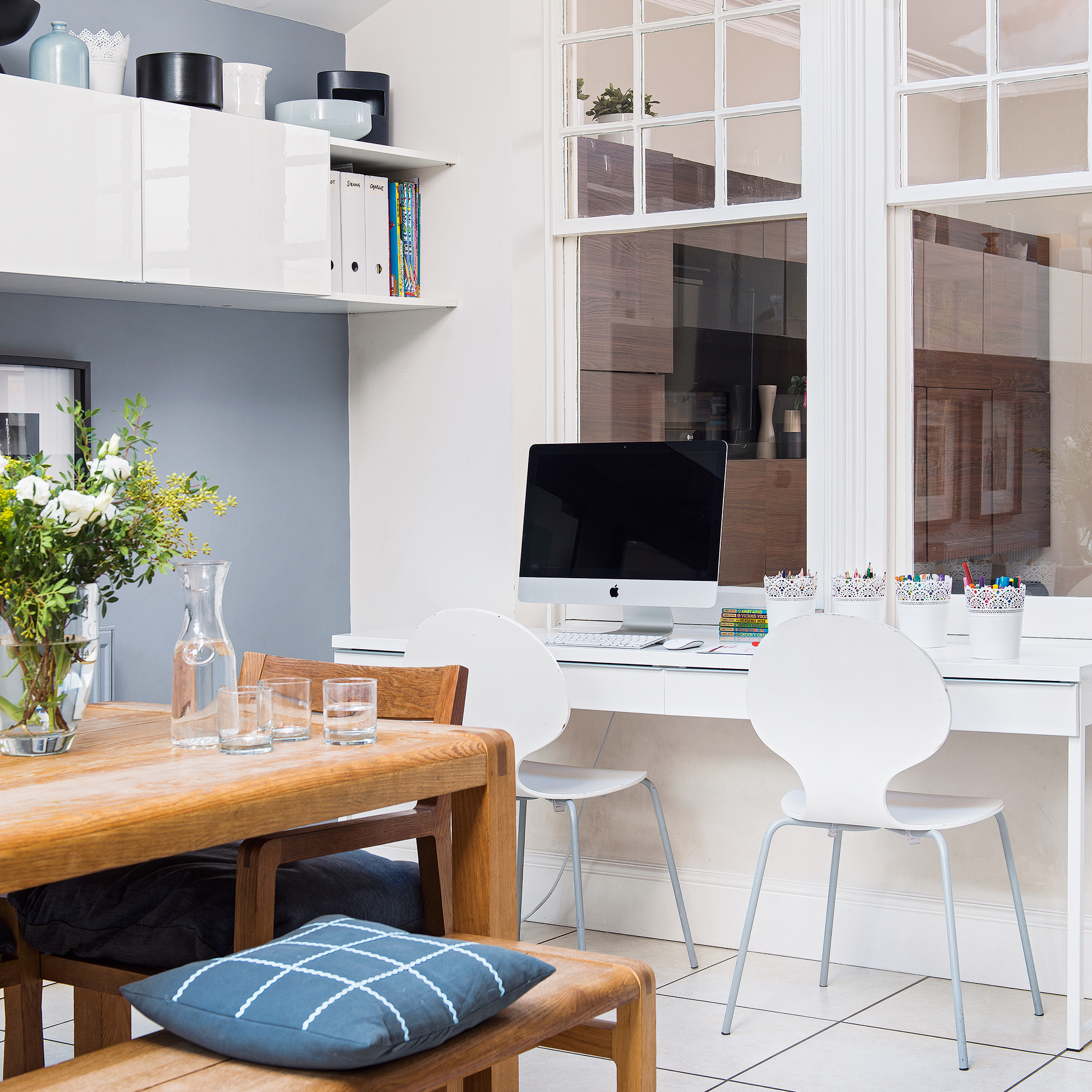
Which way should a desk face in a home office?
Where you position your desk will dependent on the size and layout of the room you are working with. If possible avoid having your desk facing wall, this is a big interior design no-no. To quote Michelle Ogundehin from the home office episode of Interior Design Masters, 'It's like putting yourself in detention.'
Ideally aim to position your desk looking out over the room, with a window to the side to provide plenty of natural light. However, if you're working with a section of another room or a small space try aim to position your desk next or under a window, so you have light and something to look at.
If you have no option but to position your desk up against a wall make sure you have fun with your home office wall decor ideas. Hanging plants or wall art, can help liven up a dull wall, and even boost productivity.
Your home office layout ideas should inspire productivity, so if you're struggling to work in your current set up it could be time for a change.

Lisa is Deputy Editor of Style at Home magazine and regularly contributes to sister title Ideal Home. She has written about interiors for more than 25 years and about pretty much every area of the home, from shopping and decorating, crafts and DIY to real home transformations and kitchen and bathroom makeovers. Homes and interiors have always been a passion and she never tires of nosying around gorgeous homes, whether on TV, online, in print or in person.
- Holly CockburnContent Editor
- Sara HesikovaContent Editor
-
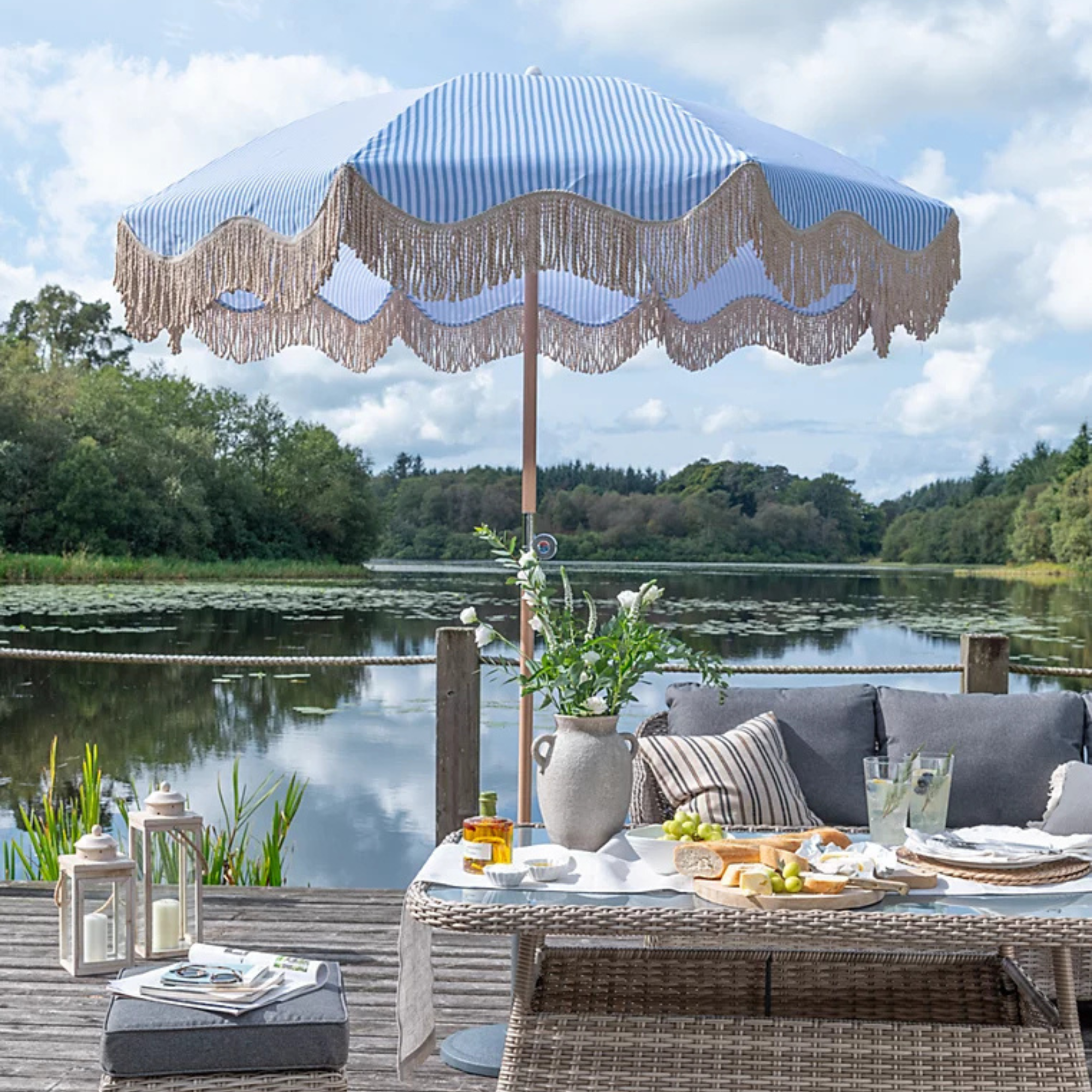 George Home’s sold-out striped parasol is finally back in stock - but this elegant design is expected to sell out again fast
George Home’s sold-out striped parasol is finally back in stock - but this elegant design is expected to sell out again fastI can't get enough of its whimsical design, too
By Kezia Reynolds
-
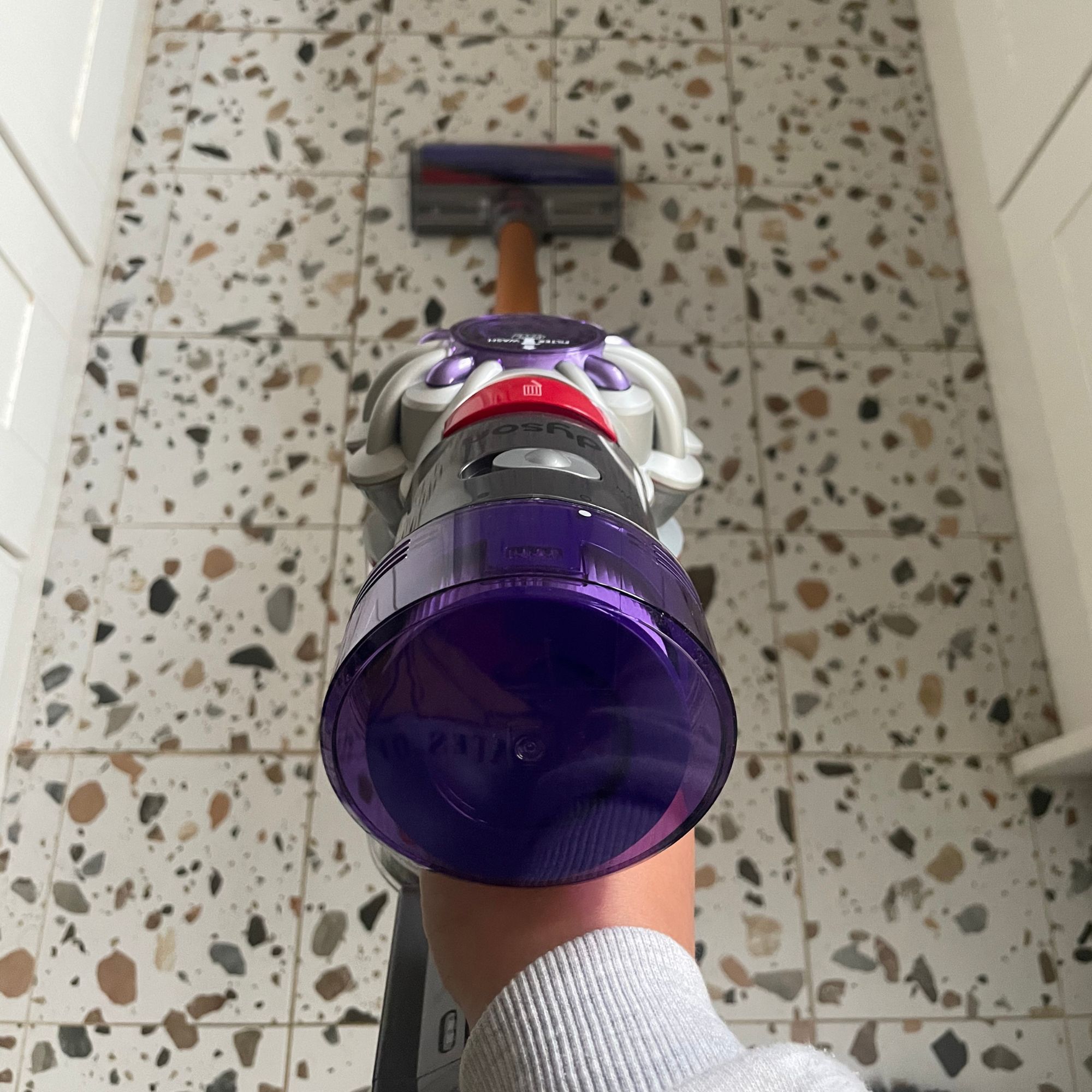 I asked a Dyson engineer how you can avoid these common Dyson vacuum cleaner problems — and how to make the most of your machine
I asked a Dyson engineer how you can avoid these common Dyson vacuum cleaner problems — and how to make the most of your machineFrom a loss of suction to poor battery life, I asked the questions to get the answers you need
By Lauren Bradbury
-
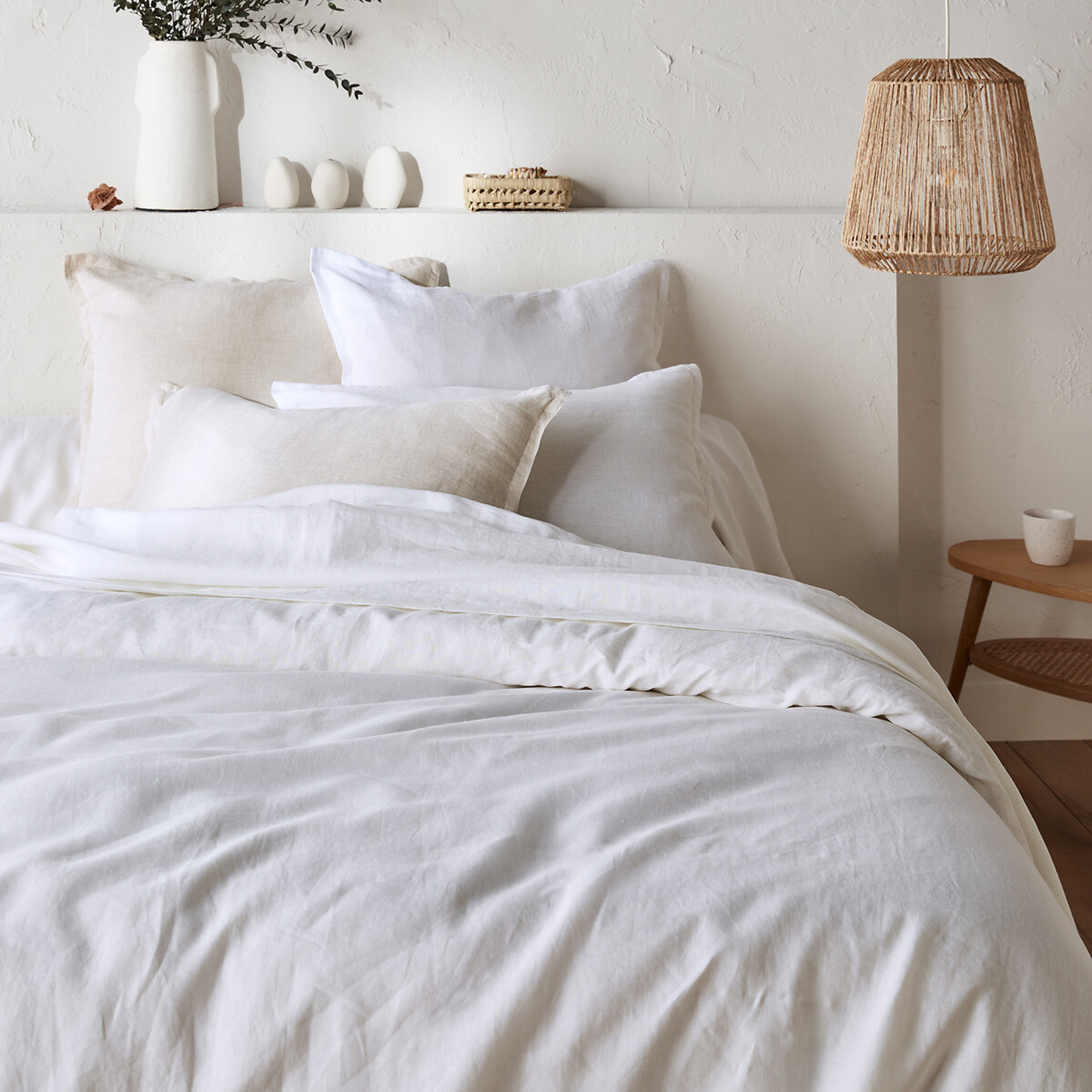 'I've now bought 3 different colours' – my favourite affordable linen bedding is currently half-price, and the 5-star reviews speak for themselves
'I've now bought 3 different colours' – my favourite affordable linen bedding is currently half-price, and the 5-star reviews speak for themselvesThe half-price linen bedding that owners can't stop raving about
By Amy Lockwood
-
 'I've now bought 3 different colours' – my favourite affordable linen bedding is currently half-price, and the 5-star reviews speak for themselves
'I've now bought 3 different colours' – my favourite affordable linen bedding is currently half-price, and the 5-star reviews speak for themselvesThe half-price linen bedding that owners can't stop raving about
By Amy Lockwood
-
 Want to cook like Jamie Oliver? This is the top-rated casserole he uses from his own collection all the time on Instagram
Want to cook like Jamie Oliver? This is the top-rated casserole he uses from his own collection all the time on InstagramJamie's collaboration with Tefal has led to this casserole dish getting the best user reviews I've ever seen
By Molly Cleary
-
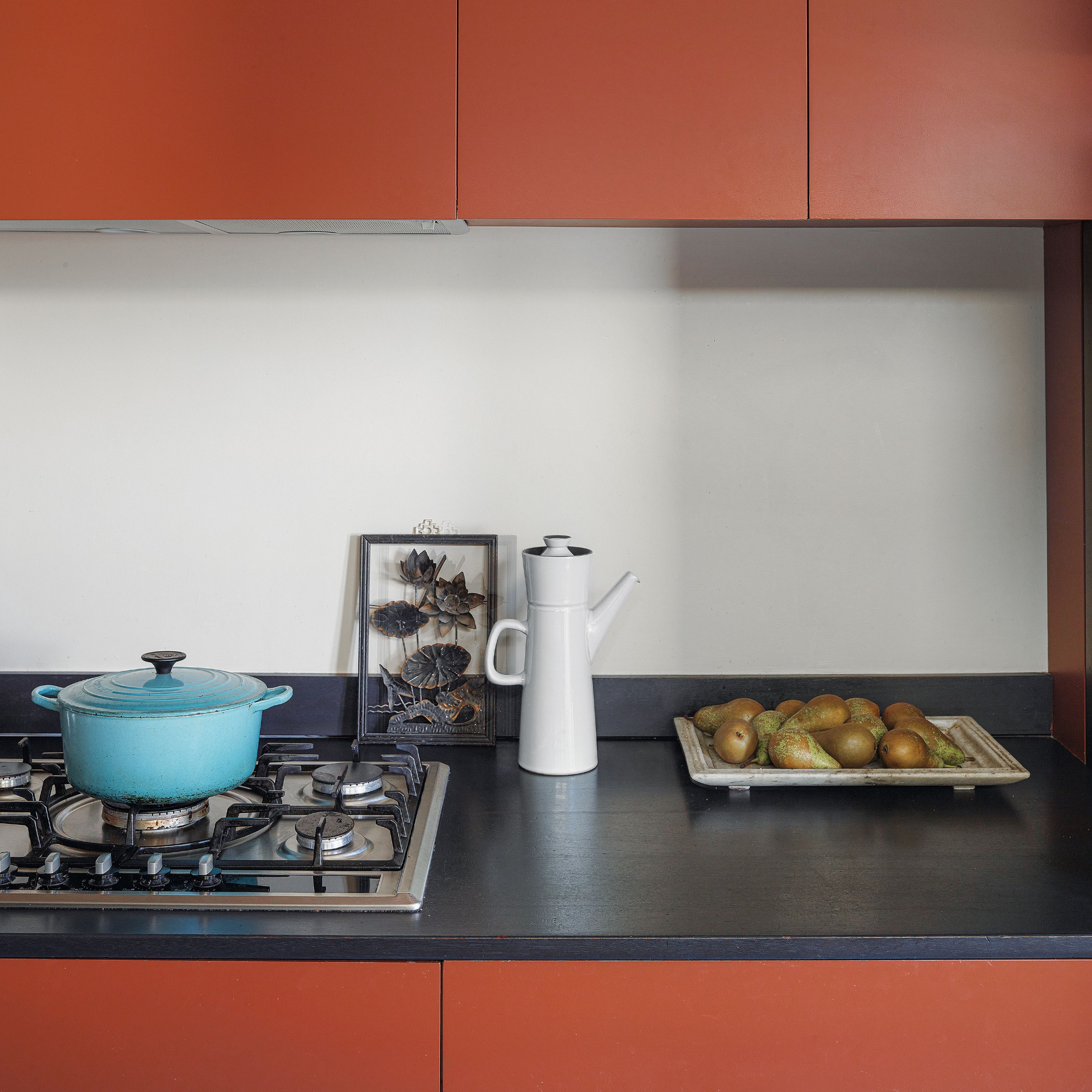 I’ve found a stunning £40 buy that rivals Le Creuset at Wilko - this casserole dish is a dead ringer for one of the most summery colourways
I’ve found a stunning £40 buy that rivals Le Creuset at Wilko - this casserole dish is a dead ringer for one of the most summery colourwaysYou just can't beat finding a great Le Creuset alternative
By Kezia Reynolds
-
 This beautiful mixing bowl is the unexpected star of so many kitchens – including Mary Berry's and the Bake Off tent
This beautiful mixing bowl is the unexpected star of so many kitchens – including Mary Berry's and the Bake Off tentThis earthenware bowl proves that you don't have to spend a huge amount for a classic kitchen addition
By Molly Cleary
-
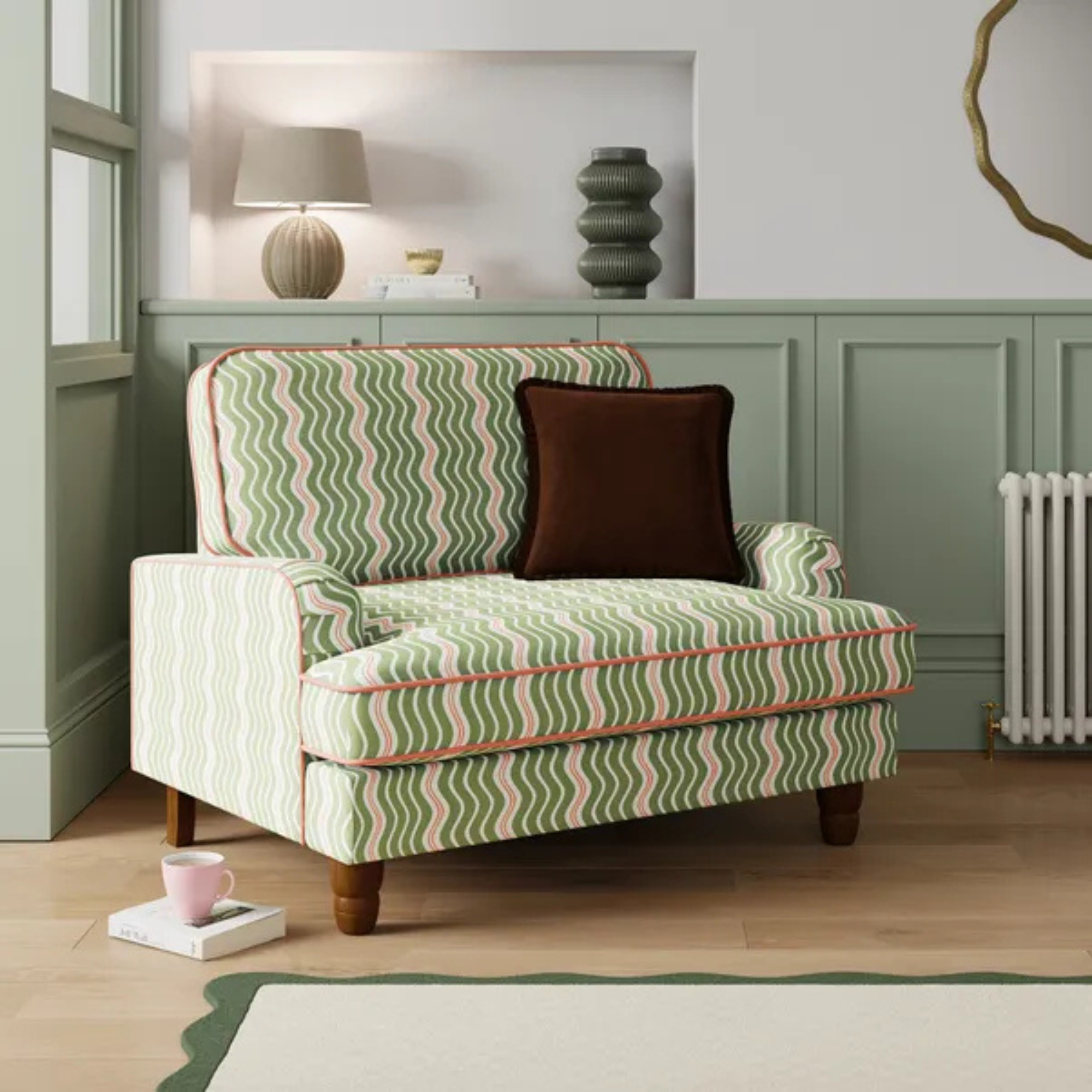 Dunelm has given its cult snuggle chair a new look - it's swapped classic stripes for another emerging pattern trend
Dunelm has given its cult snuggle chair a new look - it's swapped classic stripes for another emerging pattern trendI'm obsessed with this fresh new style
By Kezia Reynolds
-
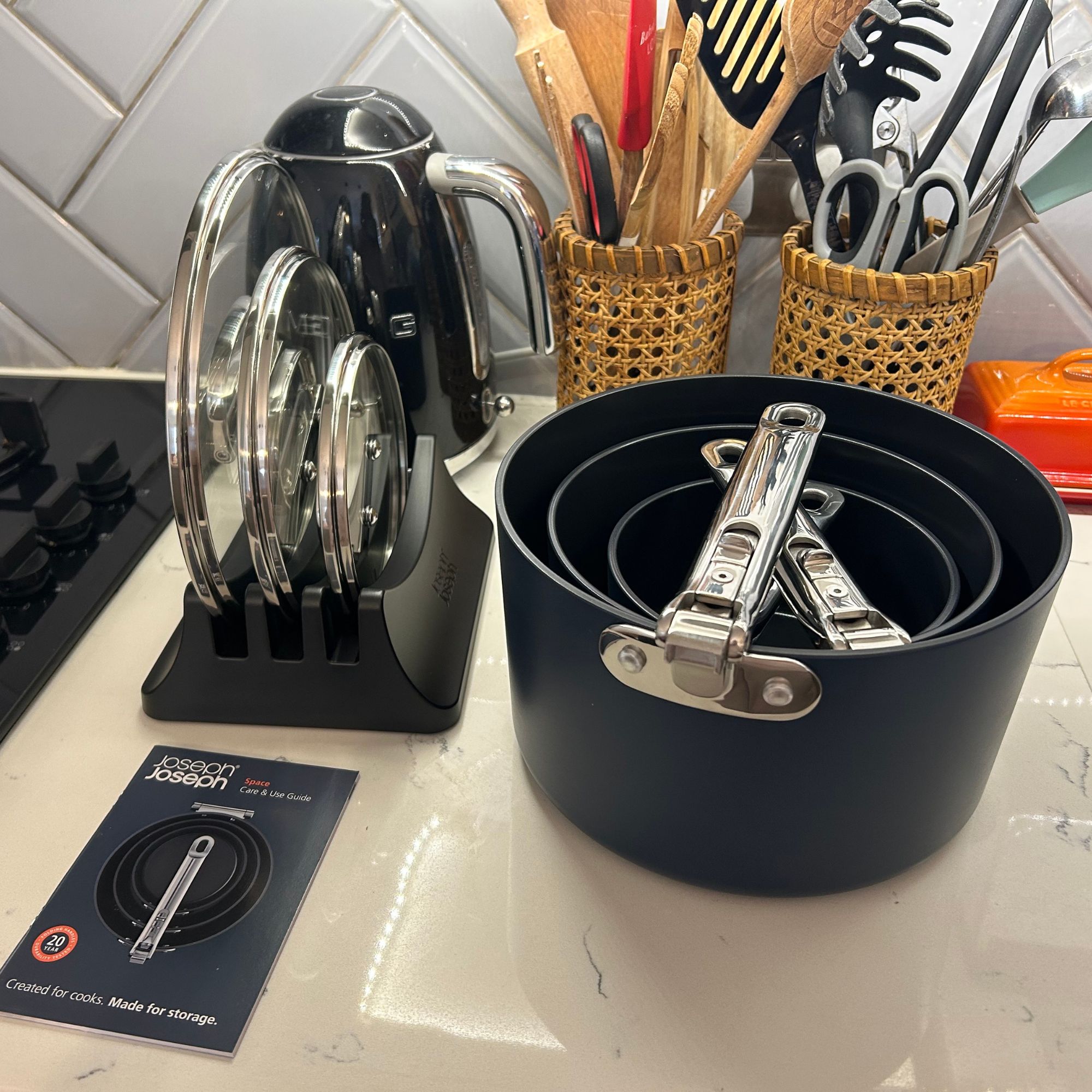 I tried Joseph Joseph's pan set with foldable handles – the space-saving design is just one of the many highlights
I tried Joseph Joseph's pan set with foldable handles – the space-saving design is just one of the many highlightsSmall kitchen? I tested this innovative Joseph Joseph space-savvy set which has foldable handles — and I loved it
By Annie Collyer
-
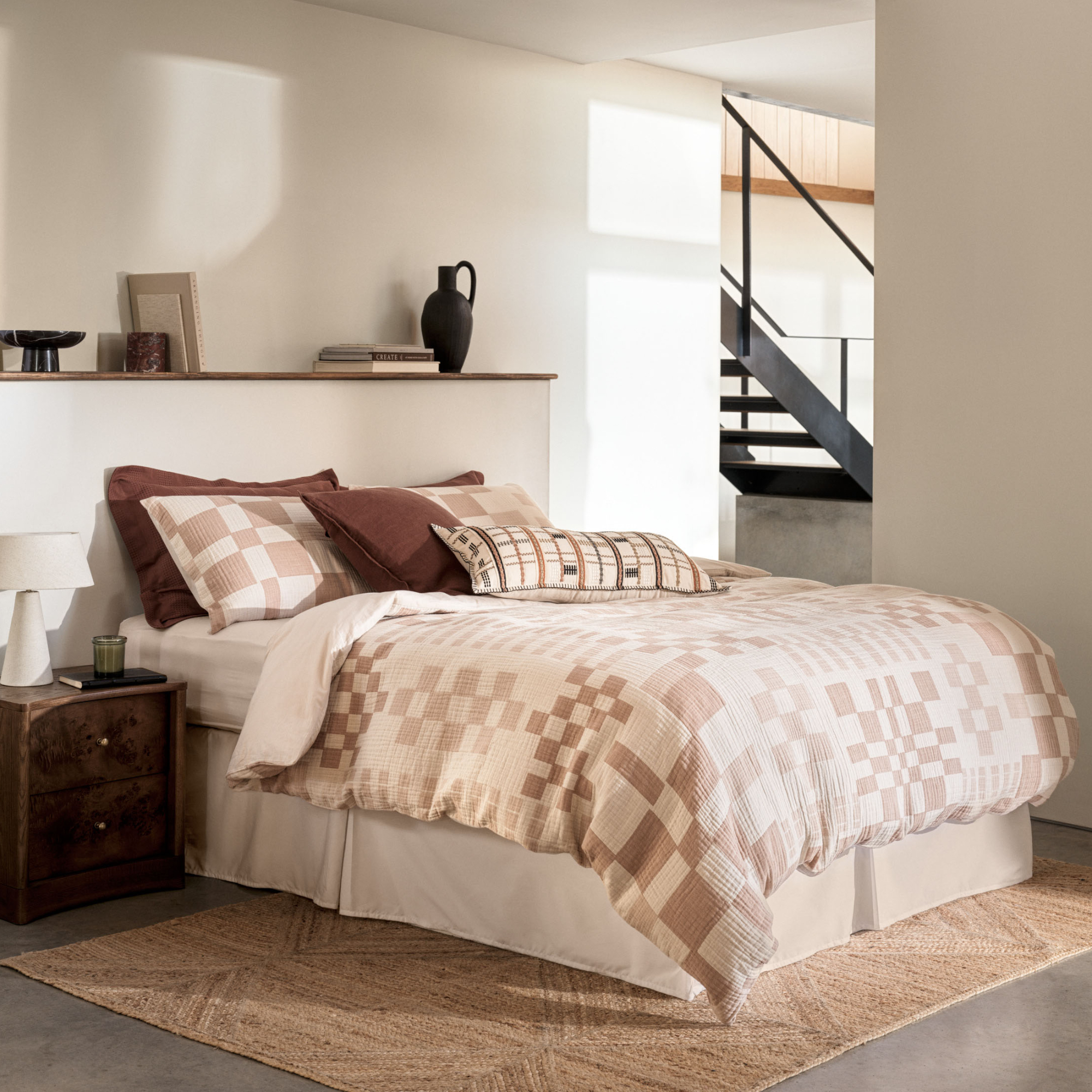 As a stylist, I spend hours looking for bedding for photoshoots, and I just spotted these 6 expensive-looking sets at M&S
As a stylist, I spend hours looking for bedding for photoshoots, and I just spotted these 6 expensive-looking sets at M&SGet a little luxury at a high-street price
By Laurie Davidson
-
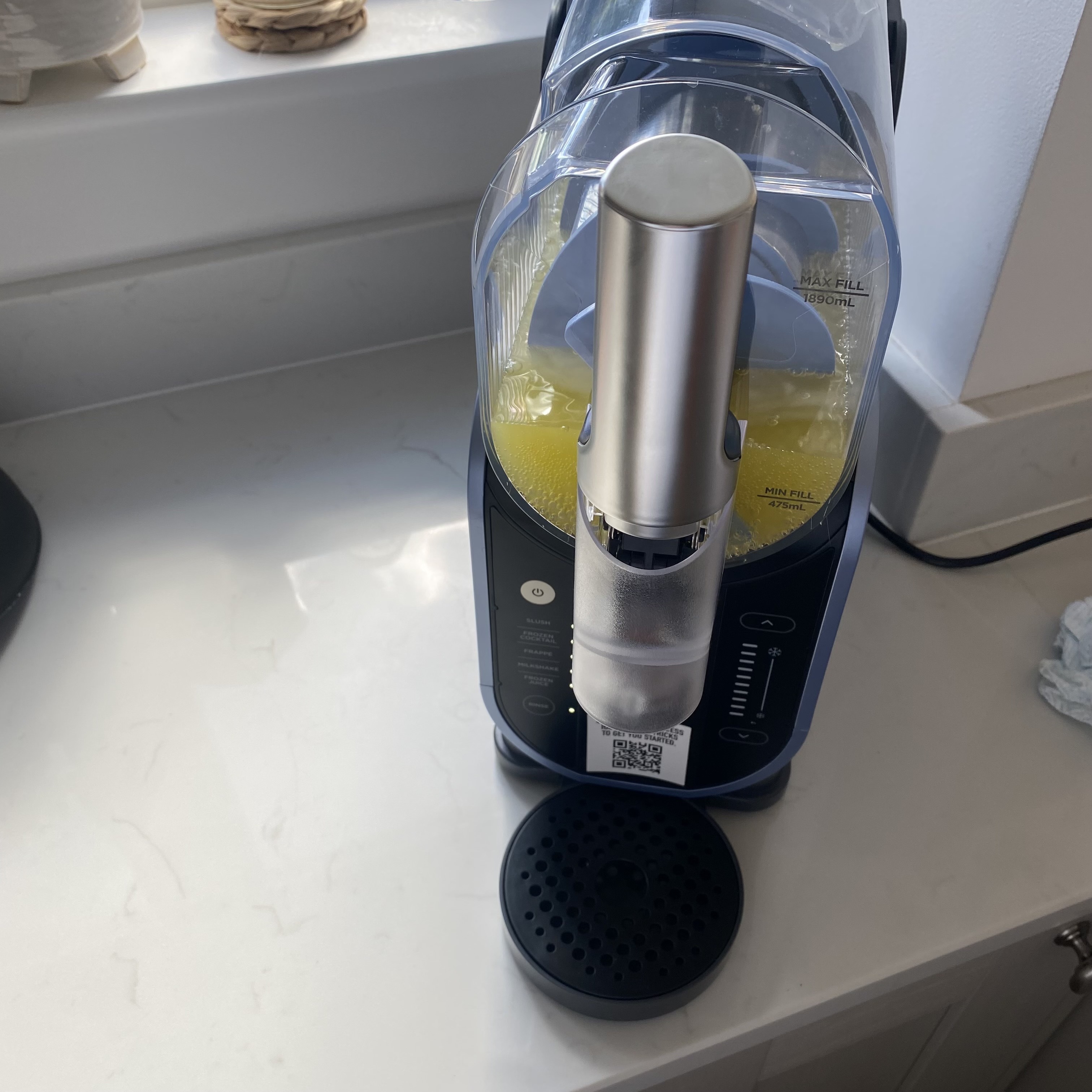 I've been waiting to try out the Ninja Slushi for months – this is what happened the first time I tried it
I've been waiting to try out the Ninja Slushi for months – this is what happened the first time I tried itThe Ninja Slushi is the stuff of dreams for summer entertaining
By Molly Cleary